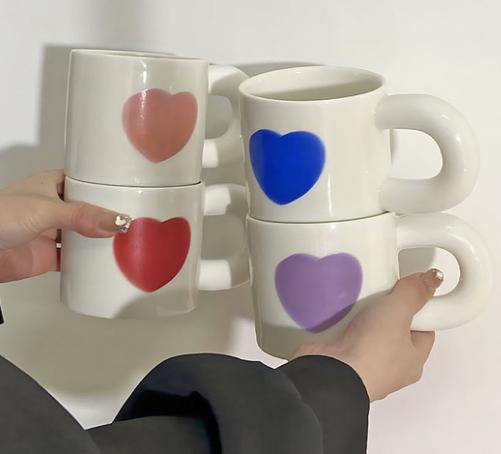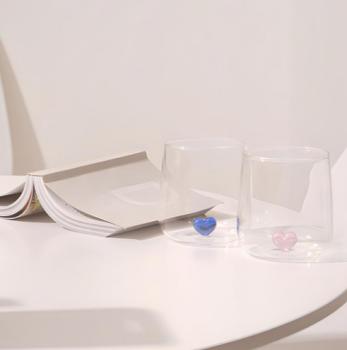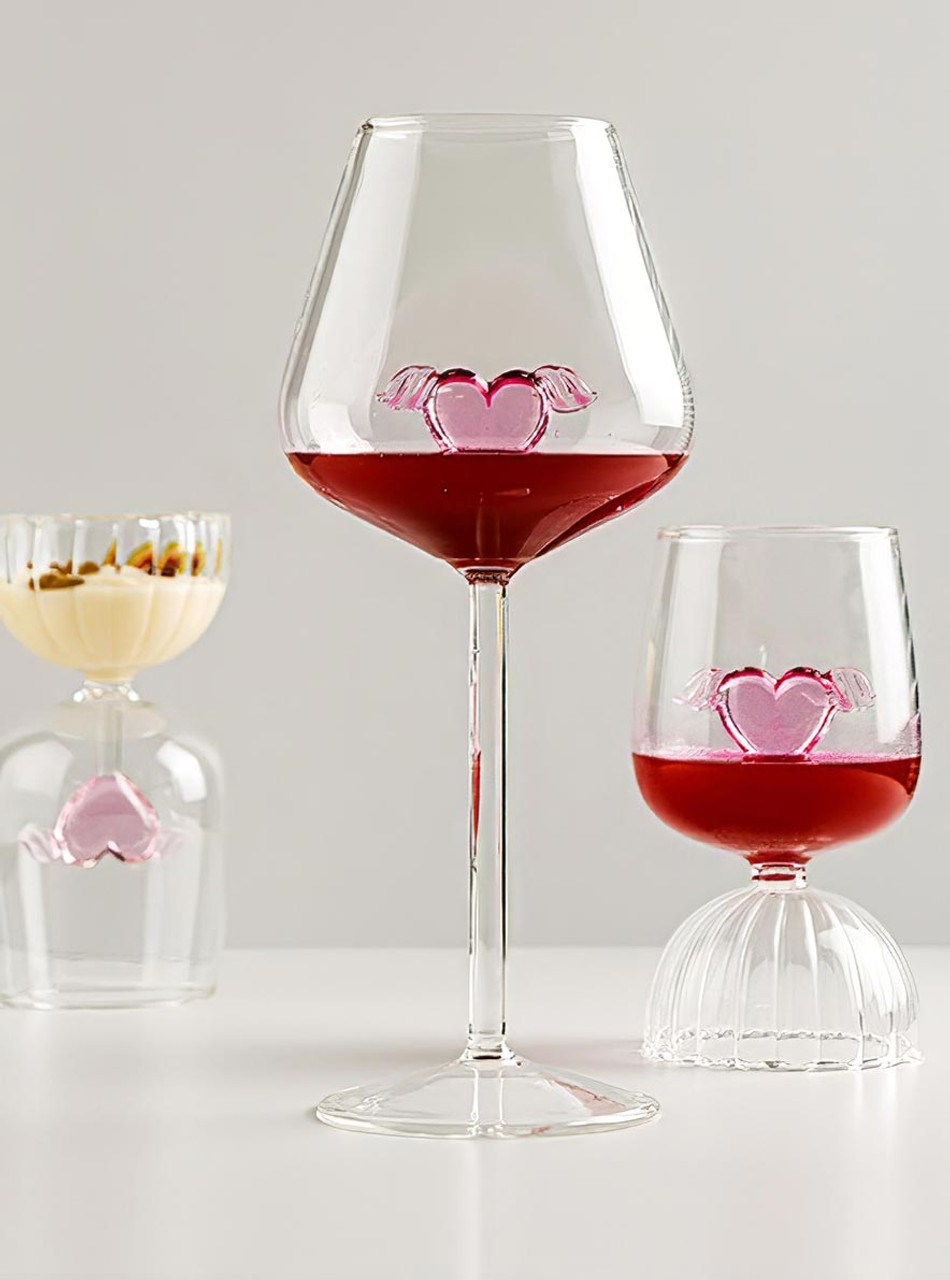A Brief History of Valentine’s Day Heart Shape Symbol
Posted by TUTU HOME on 19th Jan 2024
❤ A Brief History of Valentine’s Day Heart Symbol ❤
Fashion, culture, and art are closely interrelated, and their connection is precisely reflected in symbols. Symbols are tools of meaning, and meaning must be expressed through symbols.
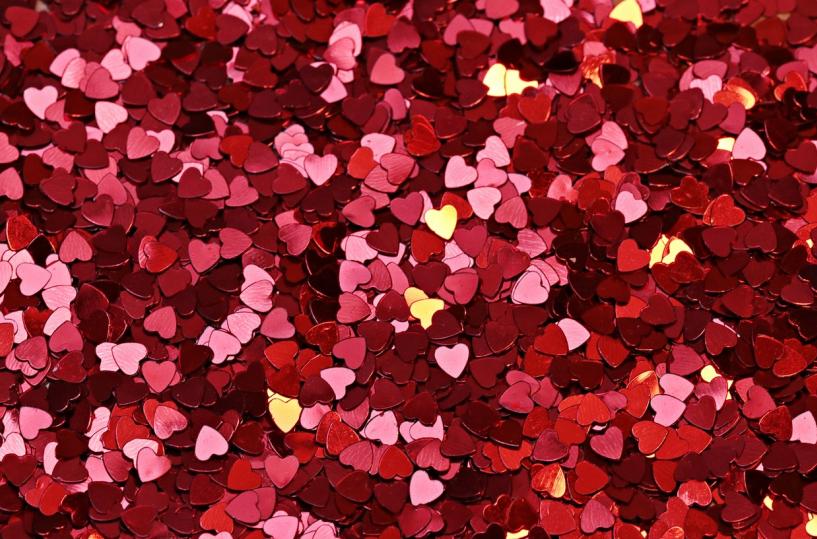
Valentine's Day is approaching, and many times we will directly express I love You to your lover, this is your daily way of getting along. Of course, you may prefer to express your love through subtle words. When sending a text message or posting on social media to express love, you may be accustomed to adding a ❤ to your words. Perhaps you've already prepared a heart-shaped greeting card and the Valentine's Day chocolate this year you made is still in a heart-shaped mold. So, as a common symbol, have you ever wondered how this symbol came about? When did the "heart shape" begin to symbolize love and emotions?

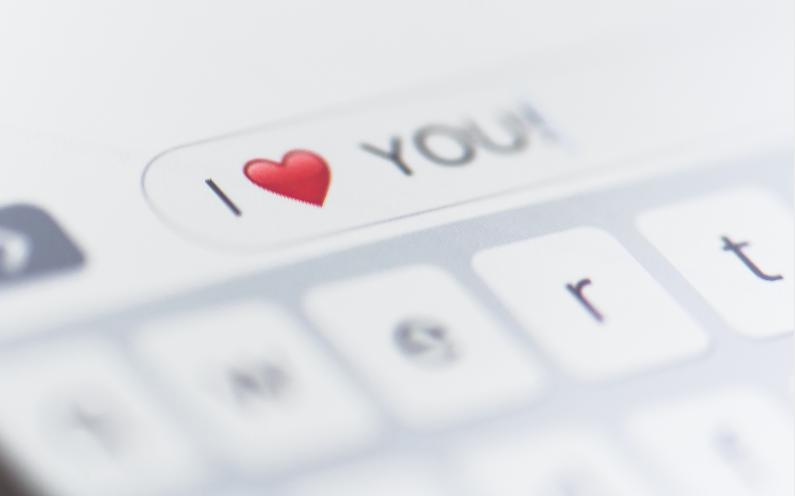
Credit: Getty Images
Is there a heart in your mind at this moment? TUTU will now narrate the history of the heart-shaped symbol to you.
The earliest origin of the heart-shaped symbol may date back to around 2300 BC in the Indus Valley Civilization. A heart-shaped pendant from this period is preserved in the National Museum in Delhi, India. However, whether the heart-shaped symbol had a specific meaning related to love during that time remains unclear due to the absence of specific documented records.
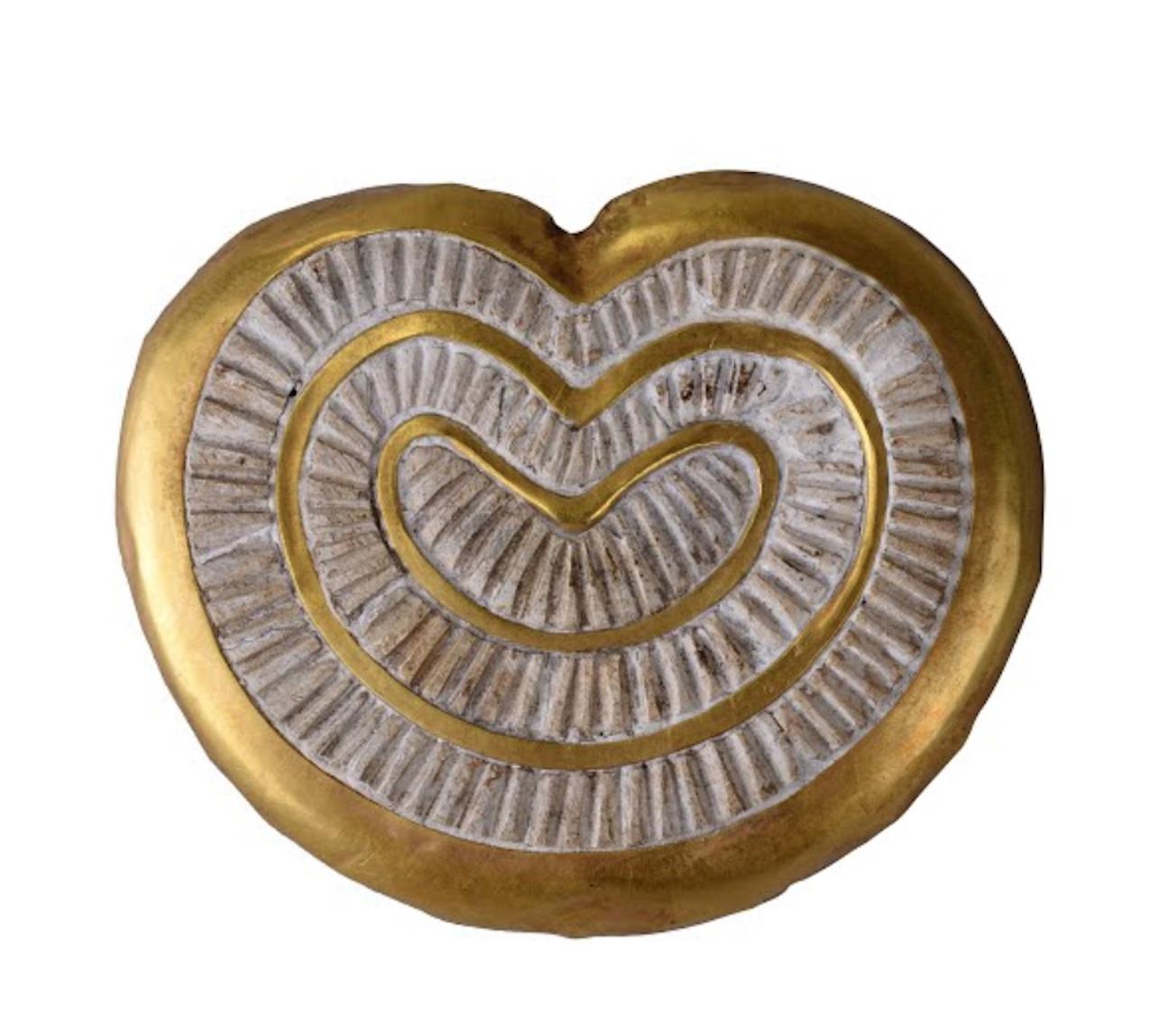
5000 Years Old Gold and Faience Heart-Shaped Pendant, Harappa, Indus Valley Civilization, India, 300-100 BCE. Credit from National Museum, New Delhi.
There are essentially two theories regarding the origin of the heart shape and how it came to symbolize what it does today. The first theory suggests that the "heart" symbol has its roots in a plant called “Silphium”. The second and more realistic hypothesis is that it is derived from the depiction of the human heart.
"Semiotics, as a branch of the study of artistic works, involves researching the definition of symbols and the origins of that definition. A lot of times, semioticians explore various other organisms as references to estimate the formation of symbols in the natural world."
❦ Heart and Silphium
The first theory suggests that the symbolic meaning of the "heart" originates from an ancient plant called Silphium, which grew along the North African coast near the Greek city of Cyrene. Its seedpod resembled a heart. In the 2nd century, this ancient plant was used for medicinal and culinary purposes, and the Greeks and Romans employed it for birth control. Due to its resemblance to the modern heart and its direct association with sexuality, the heart shape became linked with love.
Since then, the heart symbol has been used to refer to plants for nearly a thousand years.
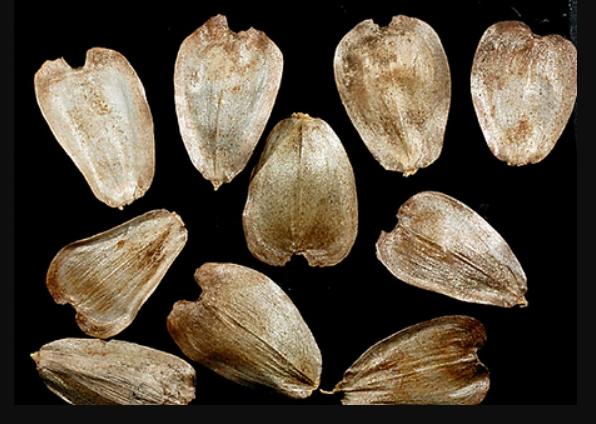
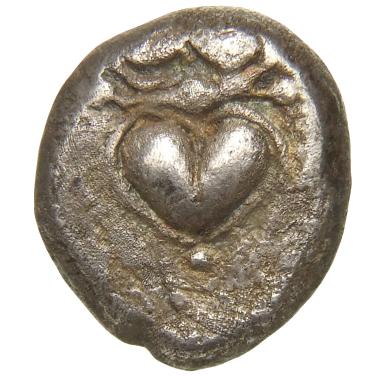
Left: Silphium seeds. Credit: K.R.Robertson, Illinois Natural History Survey
Right: A silver drachma, bearing the image of the silphium seed, from Cyrene, Libya. Credit: Münzkabinett der Staatlichen Museen, Berlin.
Beating Heart ♡
Another theory suggests that the contemporary heart shape symbolizes the concept of the human heart, and this concept is inseparable from the history of anatomy. The history of anatomy dates back to ancient Greece, where anatomists Galen depicted the heart as resembling a pine cone or an inverted leaf. Galen's anatomical works were considered classical for a long period. In the medieval period, Aristotle and others described in ancient texts that "emotion comes from the heart, not the brain," sparking significant interest in depicting the shape of the heart. However, trying to draw the pattern of the heart was very difficult at the time. While dissection of the human body was strictly forbidden by the Catholic Church for a long time after the Middle Ages, depictions of the heart were usually only used for medical purposes.
As a result, Galen's depiction of the heart persisted as the authoritative representation for a long time.
It has also been speculated that the heart shape mimics the anatomy of a human breast or buttock, as well as the anatomy of a lily pad or ivy leaves.
Although the origin of the heart is vague and uncertain, the symbolic meaning of the heart pattern has gradually become clear over time.
❥ Romantic Heart
Later on, the heart gradually replaced plants as the referent for the heart-shaped symbol. The depiction of the heart shape as a symbol of romantic love first appeared in the illustrations of the 13th-century French manuscript "Le Roman de la Poire." This is known as the earliest visual representation that portrays the heart as a symbol of love, metaphorically connecting the human heart with romantic affection.
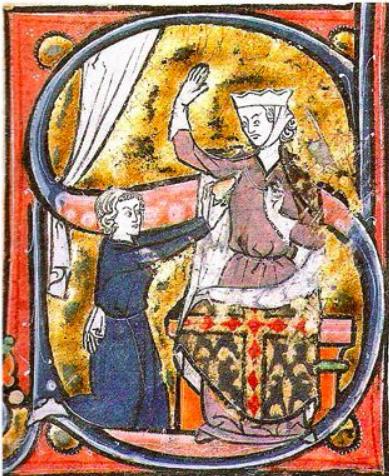
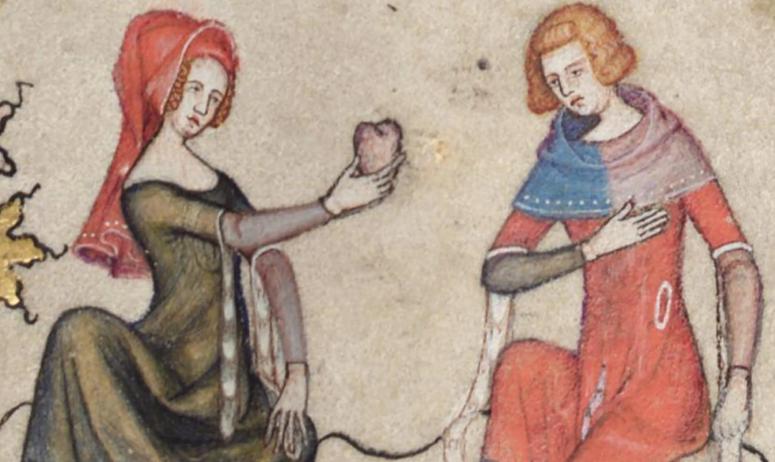
Left: Allegorical image from the "Le Roman de la Poire." Courtesy of Bibliothèque Nationale de France.
Right: "The Heart Offering," 1338-1344. Illustration from The Romance of Alexander, Bodleian Library, Oxford, England.
➳ Cupid's Arrow ❧
As mentioned earlier, human dissection was not permitted at that time, so depictions of the heart's shape more closely resembled a pine cone. In the 14th century, in the illustrations of Francesco Barberino's Italian didactic poem "Documenti d'Amore" (The Documents of Love), Cupid is depicted throwing various objects into the crowd, including a heart. This illustration marked the beginning of the widespread use of thefan-shaped heart shape in art.
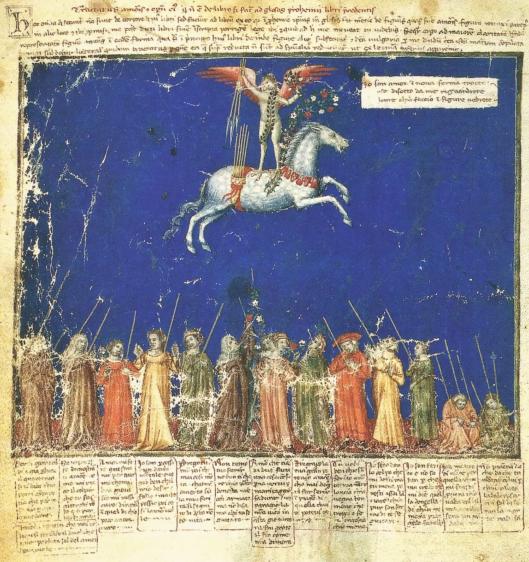
Cupid in “Documenti d’amore” via Wiki Commons
➳ Popularity ➳
In the 15th century, the heart icon became popular in various ways in Europe. Hearts appear on the pages of manuscripts, on luxury items such as brooches and pendants, as well as on coats of arms, playing cards, combs, wooden boxes, and sword handles, most of which are related to love. Interestingly, until the late 15th century, the heart pattern was usually upside down. In the early 16th century, it flipped into the heart pattern we are accustomed to today.
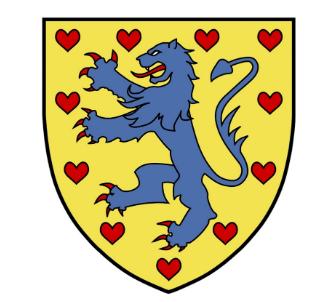
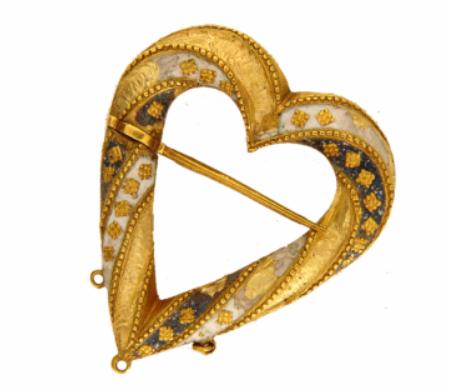
Left: Medieval German Coat of Arms, credit via Wiki Commons
Right: Fishpool Hoard Heart Brooch, 1400-1464, British Museum, London, England.
Valentine's Day and the Heart of Love ❥
In the 17th century, the heart shape became closely associated with Valentine's Day, a connection that continues to endure. The heart shape is commonly used to symbolize love, emotions, and
care. Despite anatomical differences, this shape has been widely accepted as a symbol closely tied to the human heart. People from that time decorated notes or poems with heart shapes, and by the 19th century, there was a growing trend for elaborate Valentine's Day cards.
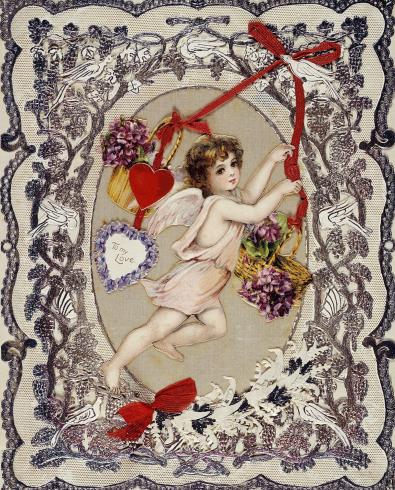
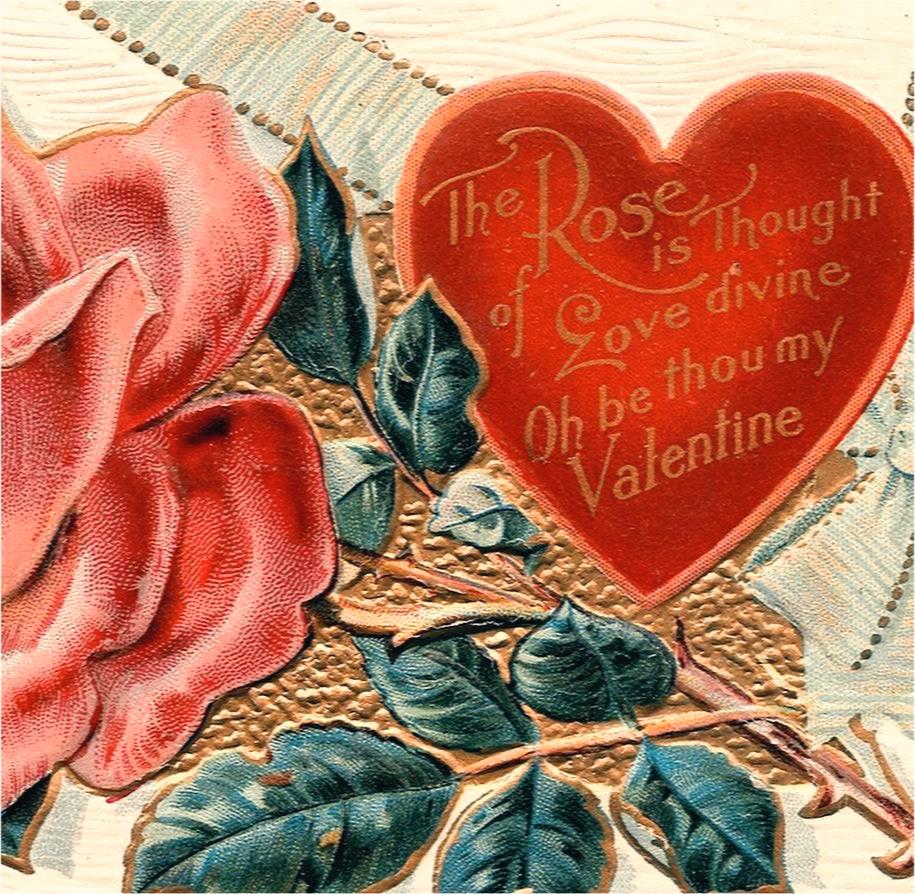
Victorian Valentine's Day Card, c.1860-1880. Credit from Wikimedia Commons.
"Your Valentine."
"From your Valentine"
❤ Your Valentine

The origin of Valentine's Day is so ancient, dating back to the year 496 AD when Pope Gelasius I added the Feast of St. Valentine to the Catholic calendar on February 14th. There are various legends surrounding Valentine's Day history, and numerous explanations connecting St. Valentine with love. Some argue that Valentine's Day has become overly commercialized, primarily driven by the modern greeting card industry. However, TUTU does not share this perspective. Looking back at the historical significance of this holiday and its connection to the symbol of the beating heart, Valentine's Day stands as a day for couples to openly express love, a day to believe in love, and a day to prove your "heart belongs". It is a day for thoughtful and creative expressions of love for him/her.
Heart/Heartღ
Love is a state of mind. "Heart" is a word that contains "He" and "Her."
TUTU’s curated Cupid and Heart Collection is here to bring special Valentine's Day gifts for him/her.


